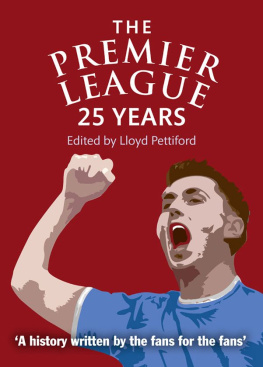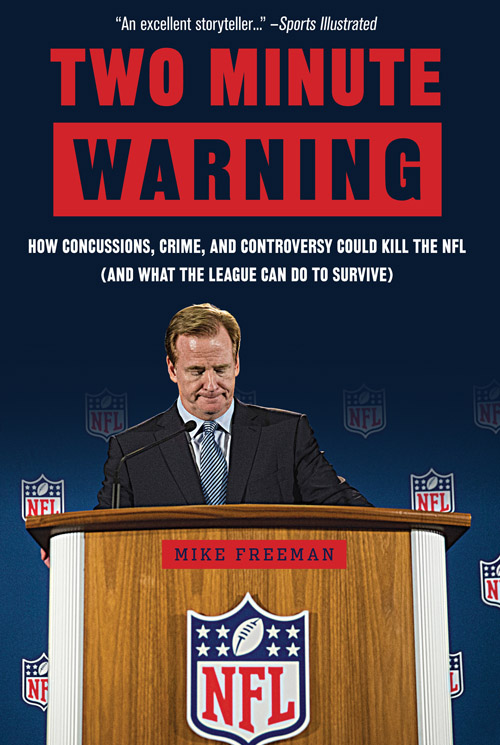
To EllaThe greatest daughter of all
Why did football bring me so to life? I cant say precisely. Part of it was my feeling that football was an island of directness in a world of circumspection. In football a man was asked to do a difficult and brutal job, and he either did it or got out. There was nothing rhetorical or vague about it; I chose to believe that it was not unlike the jobs which all men, in some sunnier past, had been called upon to do. It smacked of something old, something traditional, something unclouded by legerdemain and subterfuge. It had that kind of power over me, drawing me back with the force of something known, scarcely remembered, elusive as integrityperhaps it was no more than the force of a forgotten childhood. Whatever it was, I gave myself up to the Giants utterly. The recompense I gained was the feeling of being alive.
Frederick Exley, A Fans Notes
I came to the conclusion there was nothing else to do except end my miserable life.
Former New York Jets quarterback Ray Lucas, whose NFL career spawned 19 concussions and a painkiller addiction
Contents
Introduction
This book is about the power of a sports leaguea league with such abilities and so wide a reach that a major television studio was frightened of it. The hack on Sony did more than provide Hollywood gossip to the media. It opened a window into the NFL and that hammer it now wieldsand how even some of the most powerful entities in entertainment fear that power.
Sony is releasing a movie in 2015 called Concussion , about the life of Bennet Omalu, the neurologist who discovered Chronic Traumatic Encephalopathy (CTE) in the brain of Pro Football Hall of Fame center Mike Webster. CTE is a frightening disease. These paragraphs, written by former NFL player George Visger in January 2015 for Esquire magazine, are some of the more succinct, yet powerful words on CTE. They show why there is so much at stake for the NFLand why Sony is doing a movie on the subject.
Studies have also shown that the younger you are when first concussed, the lower your threshold is for the next. And it doesnt take concussions to cause brain damage. The brain is encased in a hard skull, with sharp bony ridges on the inside, and is surrounded by cerebral spinal fluid. Each of the thousands of sub-concussive hits an average high school player takes each season causes the brain to slosh around in the skull. Sometimes it hits the front of the skull and bounces back and hits the back of the skull. They call this a coup contrecoup injury, where the neurons get stretched. Neurons are partially composed of a stabilizing protein called tau protein and as the neurons get stretched repeatedly they get inflamed. The inflammation increases over time and over time the neurons begin to die. As they die, the sticky tau proteins disengage from the tubules and form amyloid plaques, which clump together and may block cell-to-cell signaling at synapses. This build up of amyloid plaques is a precursor to Chronic Traumatic Encephalopathy, or CTE.
One of the problems with head injuries in younger players is that your brain continues to develop into your twenties. Damage to a developing brain can worsen over the long term, leading to devastating effects in adulthood. Four years ago at age 52, doctors prescribed Lexapro to me for memory problems, in addition to the Lamictal, the anti-seizure medicine Id been on for decades. Lexapro didnt seem to help, so they stacked Arricept and Namenda, both dementia medicines, on top of those two. Since my youth, Ive lived with the repercussions of not taking football head injuries seriously. I was 22 when I had my first of what are now nine and counting football-caused emergency VP Shunt brain surgeries, and my football injuries have impacted not only my life, but have torn my family apart. In addition to football-caused gran-mal seizures, short-term memory problems have arisen from damage to my temporal lobes and anger management issues and poor judgment due to damage to my frontal lobe. My array of physical and psychological symptoms contributed to the loss of my environmental consulting business in 2011, my familys home in 2012, and my 20-year marriage to the mother of my three children in 2014.
As of September 2014, the Department of Veterans Affairs brain repository in Bedford, Massachusetts, reported that 76 of the 79 brains of deceased NFL players showed CTE. Also, as of that 2014 date, researchers had examined the brains of 128 football players in total. The subjects had played football on either the professional, semi-professional, college, or high school level. Of those 128 players, 101 of themor just under 80 percenttested positive for CTE.
Dr. Ann McKee, the director of the brain bank, told PBS.org she believes the findings show a clear link between football and serous brain trauma. She added that the higher the level you play football and the longer you play football, the higher your risk.
Publicized exposure for CTE would change everything in football, opening an arena of medical awareness the sport had never seen before. The Sony movie, with Will Smith as Omalu, is a dramatic adaption of that discovery and the subsequent fallout. It would do more than present an uncomfortable truth. The disease represents the first challenge to the long-term future of the NFL.
Among the leaked information, as originally documented by BuzzFeed.com, was a memo sent to the Sony team working public relations for the movie from Allan Mayer, who heads a PR firm called 42West. Mayer wrote about his companys plans to counter what they expectedrightfully sowould be the NFLs attempt to discredit, even crush the movie.
Said Mayer in the leaked document: Concussion is going to piss off the NFL. We should not try to pretend otherwise. Moreover, there is no concession we could make short of agreeing to cancel the project entirely that could possibly satisfy them. Our strategy should thus be based on the assumption that we are going to be facing a powerful adversary that may try to prevent the movie from being madeand, failing that, to ensure that as few people as possible see it or take it seriously.
BuzzFeed writer Lindsey Adler wrote: Mayer warns of two tactics they fear the NFL will use to push back against Concussion . He first suggests the NFL will release information that they feel will devalue the validity of Concussion s portrayal of their relationship with Dr. Omalu. Next, he warns the team at Sony that the NFL might try to use its influential partnerships [ESPN, Nike, a horde of celebrities] to derail the marketing and promotion of Concussion .
The second approach, which Mayer calls a pressure campaign would not be far off from how the NFL managed to suppress the reach of a similar film: League of Denial , a 2013 documentary about Dr. Omalu, CTE, and the NFL. Last year, ESPN backed out of partnership on the documentary out of fear of damaging its relationship with the NFL. Unlike ESPN, Sony does not rely heavily on access and partnerships with the NFL, but Mayers memo supports the long held understanding that the NFL is an enemy that even the largest competitors dont want to piss off.
In other words, the NFL was able to intimidate one of its television partners, ESPN, into dropping a legitimate concussion expose because it might make the league look bad. Mayers memo reveals that a huge movie studio feared the NFL would try to Swift boat them as well. In many ways, the memobarely discussed in the football media (another sign of the NFLs power)is one of the greatest indicators of pro footballs current influence.


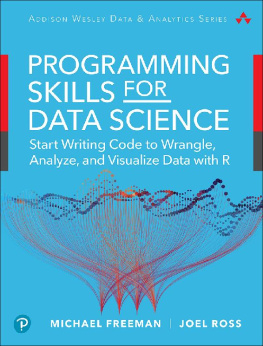


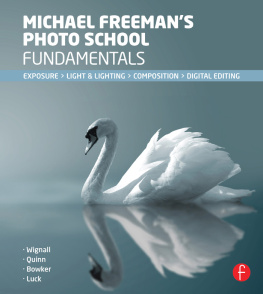


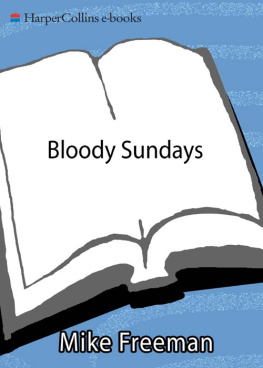

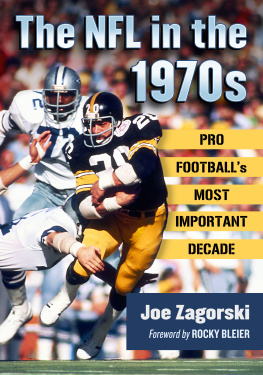
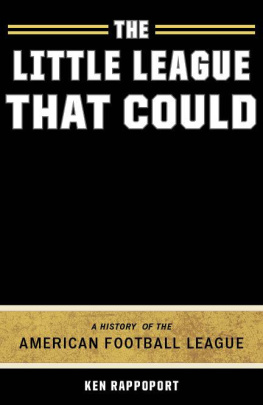

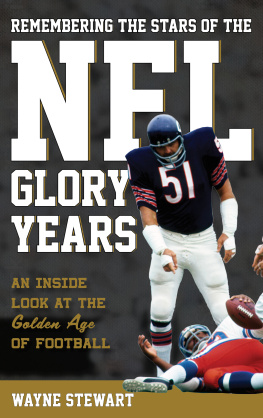

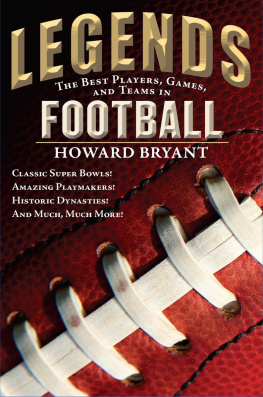
![National Football League. - Men of Sunday: [how faith guides the players, coaches, and wives of the NFL]](/uploads/posts/book/165636/thumbs/national-football-league-men-of-sunday-how.jpg)
